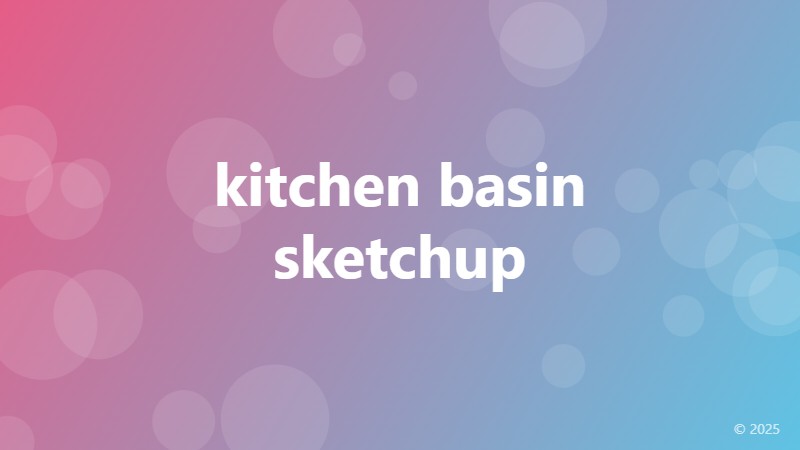kitchen basin sketchup

Designing a Kitchen Basin with SketchUp: A Comprehensive Guide
When it comes to designing a kitchen, one of the most crucial elements to consider is the kitchen basin. Not only does it serve as a functional component for washing and cleaning, but it also plays a significant role in the overall aesthetic appeal of the kitchen. With the advent of 3D modeling software like SketchUp, designing a kitchen basin has become more accessible and efficient. In this article, we'll delve into the world of kitchen basin design using SketchUp and explore its benefits, features, and best practices.
Why SketchUp for Kitchen Basin Design?
SketchUp is a popular 3D modeling software that has gained widespread acceptance in the architecture, interior design, and construction industries. Its ease of use, versatility, and accuracy make it an ideal tool for designing kitchen basins. With SketchUp, you can create detailed and realistic models of your kitchen basin, allowing you to visualize and experiment with different designs, materials, and layouts before finalizing your project.
Key Features of SketchUp for Kitchen Basin Design
SketchUp offers a range of features that make it an ideal tool for kitchen basin design. Some of the key features include:
- Accurate modeling: SketchUp allows you to create precise and detailed models of your kitchen basin, taking into account measurements, materials, and textures.
- Real-time rendering: With SketchUp, you can visualize your design in real-time, making it easier to make changes and adjustments as needed.
- Collaboration tools: SketchUp enables seamless collaboration with architects, designers, and contractors, ensuring that everyone is on the same page.
- Extensive library: SketchUp's vast library of 3D models, textures, and materials allows you to access a wide range of kitchen basin designs and components.
Designing a Kitchen Basin with SketchUp: Best Practices
When designing a kitchen basin with SketchUp, there are several best practices to keep in mind. Here are a few tips to get you started:
- Start with a clear understanding of the kitchen layout and measurements.
- Use SketchUp's built-in tools to create accurate and precise models of your kitchen basin.
- Experiment with different materials, textures, and colors to find the perfect combination for your design.
- Don't be afraid to try out new and innovative designs – SketchUp allows you to easily modify and adjust your design as needed.
Conclusion
Designing a kitchen basin with SketchUp is a powerful way to bring your design vision to life. With its ease of use, accuracy, and versatility, SketchUp is the perfect tool for architects, designers, and homeowners looking to create a stunning and functional kitchen basin. By following the best practices outlined in this article, you'll be well on your way to designing a kitchen basin that exceeds your expectations.